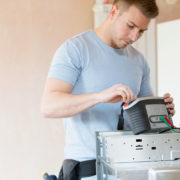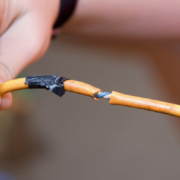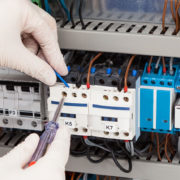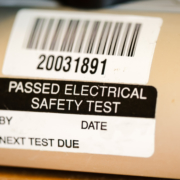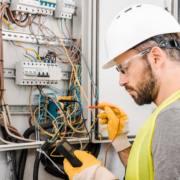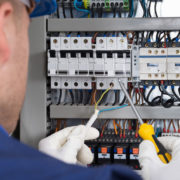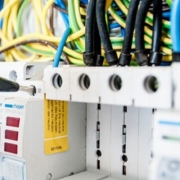PAT Testing in the Workplace
A Quick Guide to PAT Testing for the Workplace
Electricity is a form of energy which can be exceptionally powerful and is used extensively in workplaces. It can be used to power offices, factories and shops in a variety of ways. But electricity can also be dangerous. Any workplace, packed full of electrical products, represents a significant risk to your staff and your customers. That’s why it’s crucial that you regularly test your electrical appliances.
The most common safety test carried out is PAT testing. It’s a series of checks which safeguards people coming into your business and ensures that you meet the Electricity at Work Regulations. You may not be familiar with the methods behind PAT testing, so we’ve put together a quick guide.
What is PAT Testing?
Portable Appliance Testing (better known as PAT ) involves the examination of electrical products to verify their safety and confirm they are fit to use. The procedure takes in the following checks:
- A visual inspection of both the cables and the appliance to identify any significant damage e.g. split cables and exposed components
- An insulation test which measures the quality of insulation that protects any parts of the appliance which carry a current
- Carrying out an earthing continuity test to determine whether earthing conductors are suitable enough to protect against electric shock
A PAT test can be completed relatively quickly by connecting appliances to a PAT testing device. If the appliance passes the PAT test then it can continue to be used. However, any appliance that fails its PAT test must be removed from service immediately. Although not a legal necessity, it is considered good practice to label individual devices with a PASS/FAIL sticker.
Electrical Testing in the Workplace
The Electricity at Work Regulations state that all electrical systems must be maintained in order to prevent any form of danger. The regulations do not specifically indicate that PAT testing itself is a legal requirement, but the fact remains that it’s a crucial step in maintaining appliances. PAT testing is a guaranteed method for evaluating the safety of electrical appliances. As such, it should form a part of every organisation’s maintenance routine.
When it comes to PAT testing frequency it is recommended that these checks are carried out as per below:
- Offices, Hotels and Shops: Electrical appliances that fall under the class 1 category – stationary and IT devices – should be tested every four years. However the recommended time between tests is much shorter for portable equipment (every two years) and handheld equipment (every year)
- Public Use: Stationary equipment, along with IT systems, should be tested every year if they are being used by the public. Class 2 appliances – those which do not require an earth connection – are also subject to this yearly test. However, any portable and handheld equipment that is handled by the public should be PAT tested every six months.
Final Thoughts
PAT testing is one of the simplest methods of protecting your staff and your customers. Not only does it help your business comply with the Electricity at Work Regulations, but it minimises the risk of electrical accidents. Accordingly, it’s vital that your business understands all PAT testing requirements and also adheres to the recommended PAT testing frequency periods. Most important of all is to work with competent PAT testers who can confidently certify your equipment.
Read more about Electrical Testing or call to discuss your requirements.

